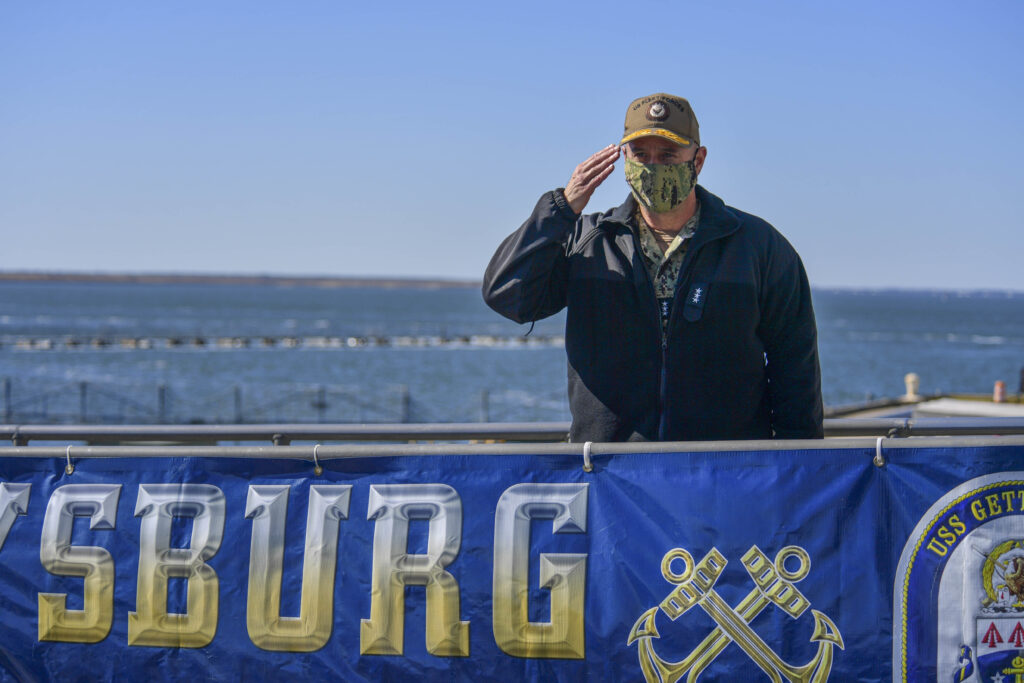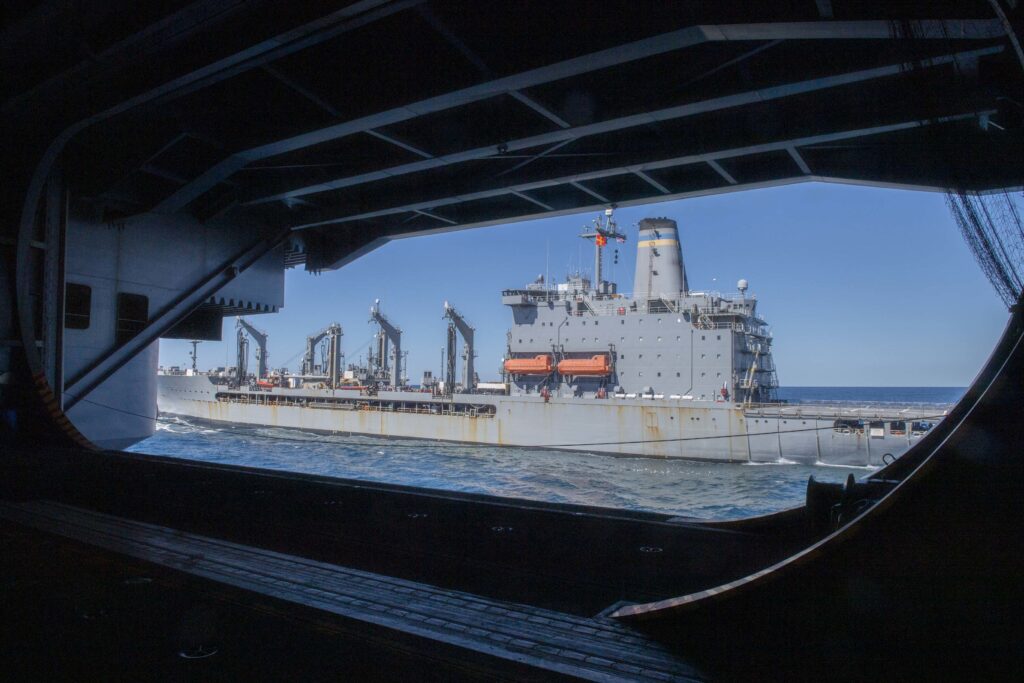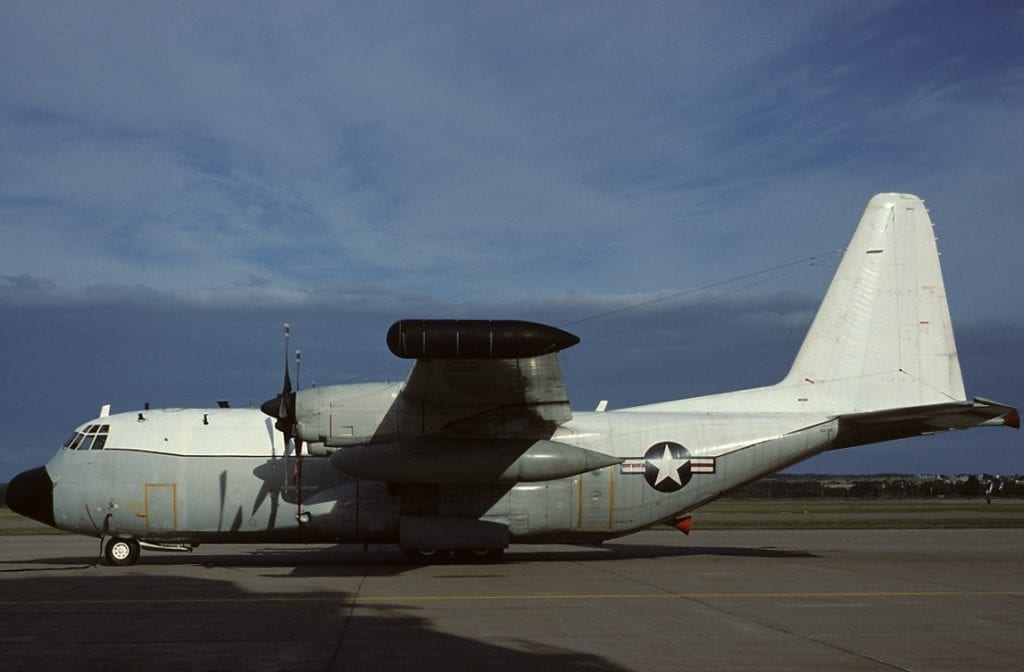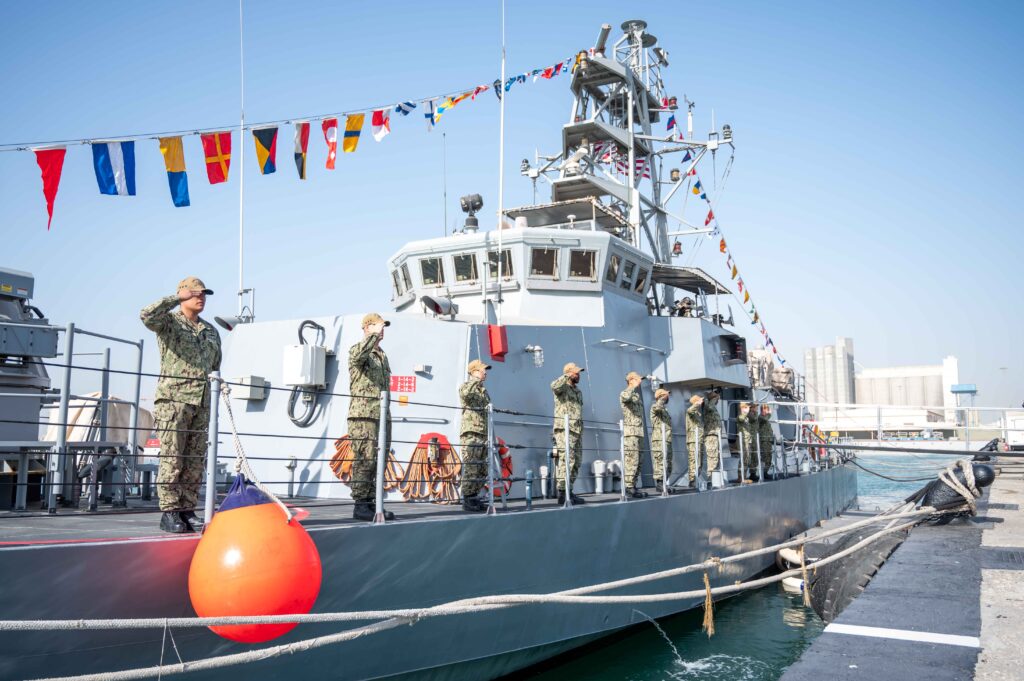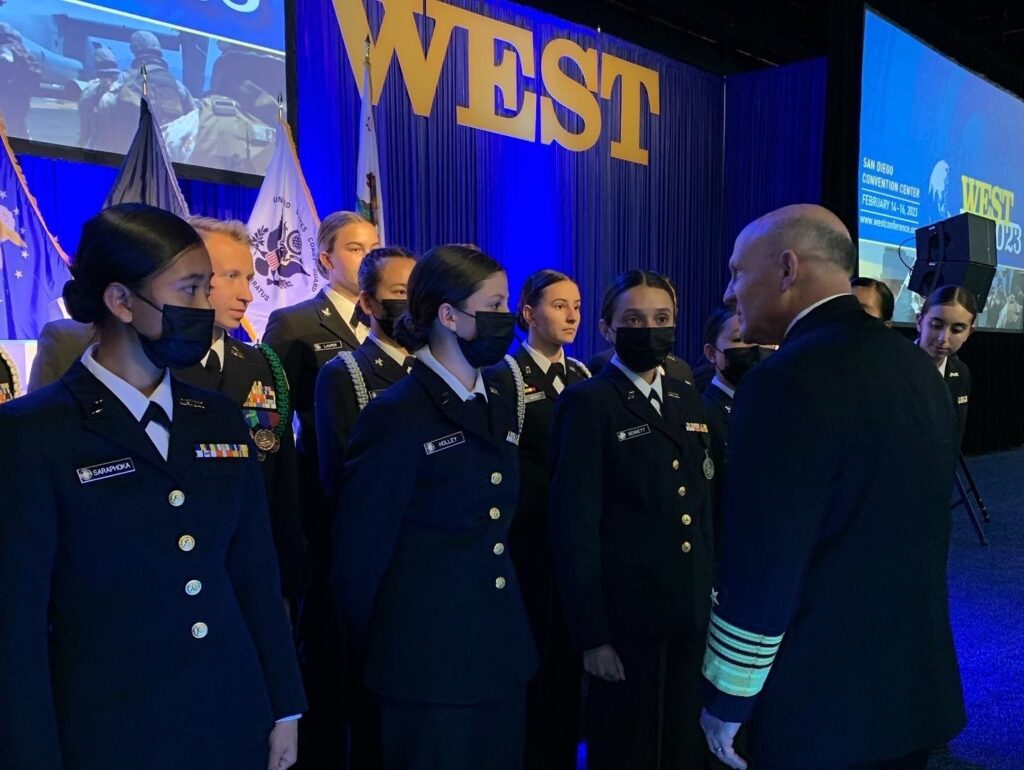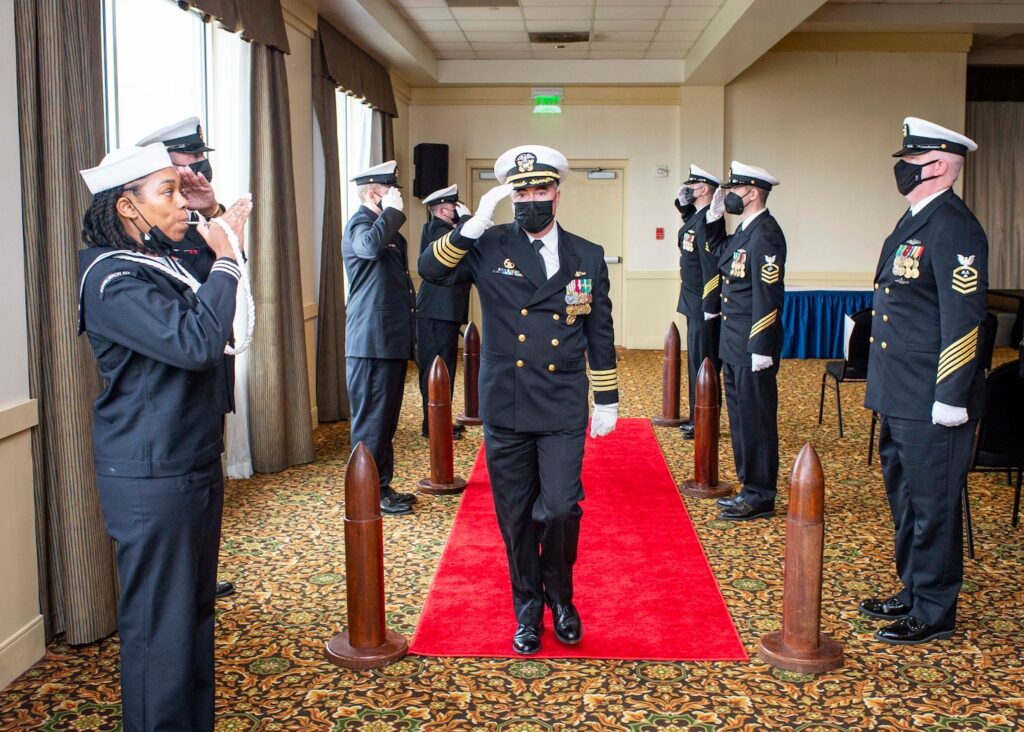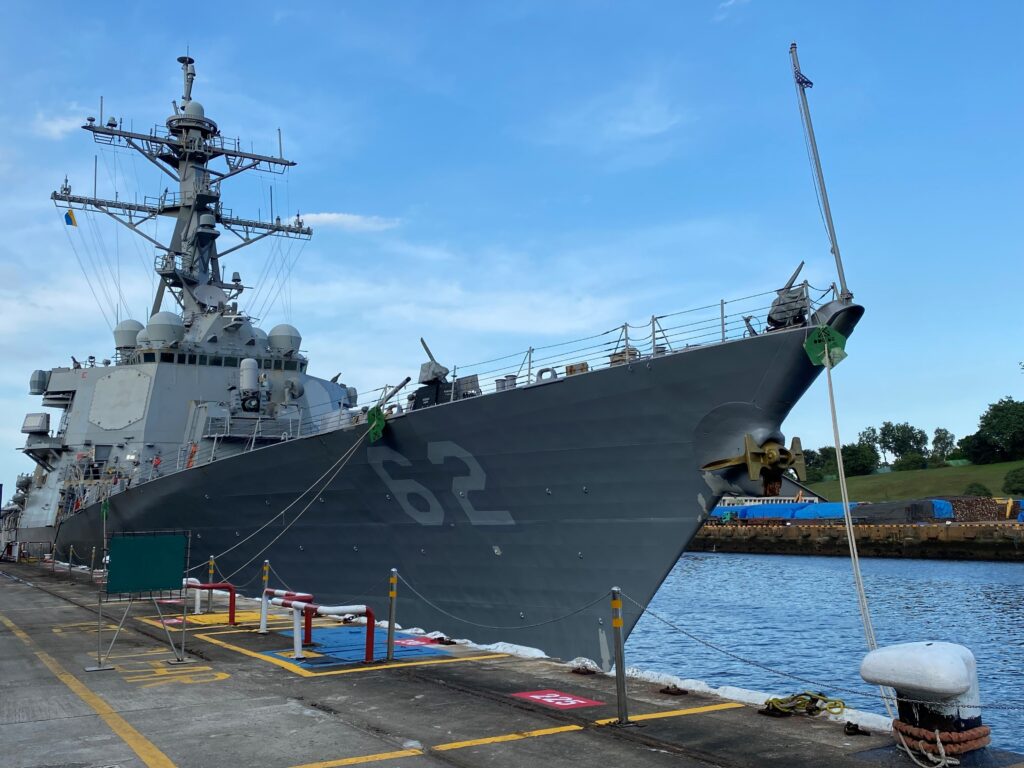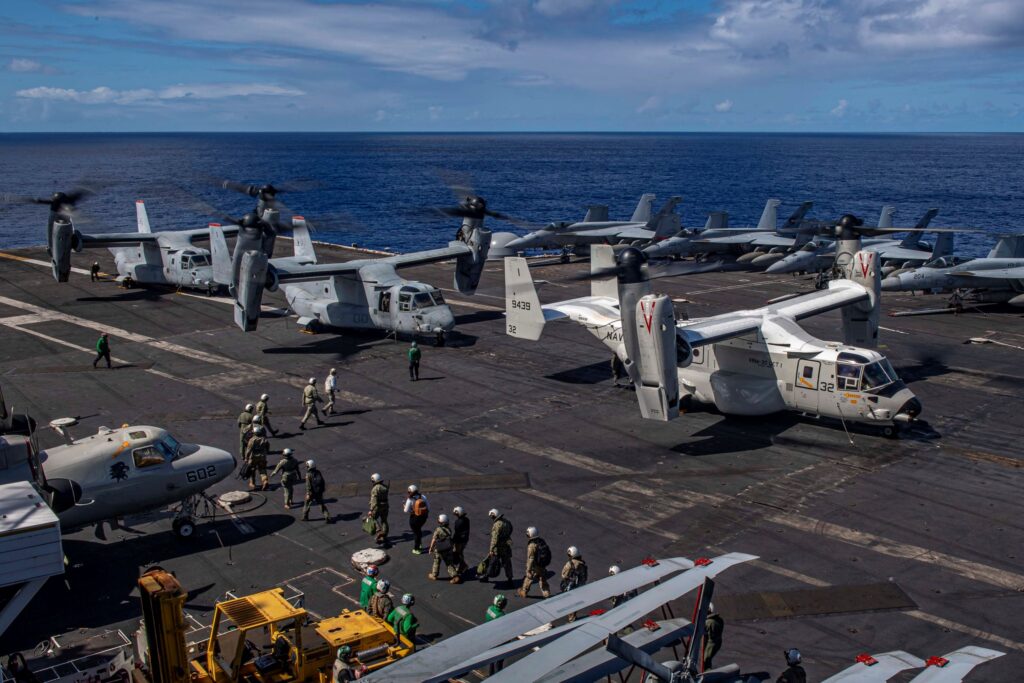CNO and Connecticut Congressman Visit Commands and Industry Partners
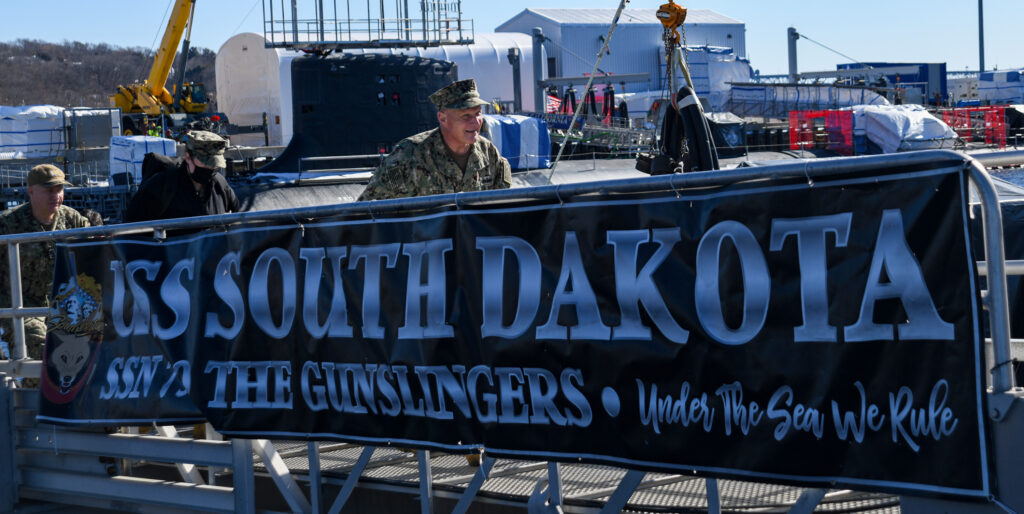
GROTON, Conn. — Chief of Naval Operations Adm. Mike Gilday and Connecticut Rep. Joe Courtney traveled to Rhode Island and Connecticut to visit with Sailors, tour Navy commands and meet with industry partners on Feb. 28, the CNO’s Public Affairs office said in a release.
Together, they visited General Dynamics Electric Boat shipyards at Quonset Point, Rhode Island, and Groton, Connecticut, where they received updates about Virginia-class and Columbia-class submarine construction.
“These submarines need to be delivered on time, on budget, and ready for the fight — we have no margin to fall behind,” Gilday said. “Columbia-class is our number one acquisition priority, and Virginia-class submarines are our advantage at sea. Working together with our industry partners, we will get them into the fleet where they belong.”
“Activity around the globe and calls for support from our allies has really put eastern Connecticut in the spotlight in terms of delivering on the most important needs of the U.S. Navy,” said Courtney. “Our region’s shipbuilders and manufacturing industries keep our Navy unrivaled on and beneath the waves. Today CNO Gilday saw the high-tempo production in southern New England that is meeting the Navy’s demand signal. Our region’s manufacturing and building trades workforce continues to illustrate that the Navy’s targeted investments are paying off, and preparing us for tomorrow’s challenges.”
Columbia-class ballistic missile submarines (SSBN) are the nation’s future Sea-Based Strategic Deterrent and will provide the most survivable leg of the Nation’s strategic triad. As set forth in the 2018 Nuclear Posture Review, the program will consist of a minimum of 12 submarines to meet U.S. strategic deterrent force structure requirements.
Columbia SSBNs are replacing Ohio-class SSBNs and will be a vital part of the fleet, remaining in service until 2080. The Ohio-class SSBNs will begin to reach their end of service life in 2027.
During the visit, Gilday visited Quonset Point and Groton facilities and interacted with employees.
“The work being done here in partnership with General Dynamics Electric Boat is shaping the future of the Navy and will deliver cutting edge capabilities and strategic deterrence,” said Gilday.
During the visit he spoke with employees and told them, “You are like world-class Olympic athletes, with your unrelenting dedication and expertise to build the world’s best submarines. Thank you for your efforts to make sure tomorrow’s Sailors have what they need to deter aggression and win the fight.”
Gilday and Courtney also visited the Virginia-class fast-attack submarine USS South Dakota (SSN 790) at Naval Submarine Base New London, where they ate lunch with the crew, talked with Sailors and toured the submarine.
Next, Gilday and Courtney visited the Undersea Warfighting Development Center to hear a tactics brief and the Naval Submarine School Submarine attack center where they met with Sailors.
